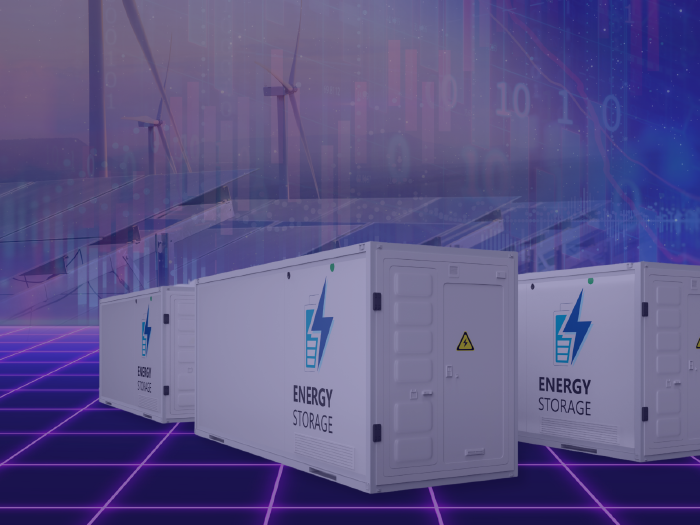News
better business decisions
Posted 1 year ago | 6 minute read

Earth Day 2024
As the climate crisis becomes ever more serious, each Earth Day that comes along takes on extra significance. In this article we take a look at what Eart Day is and why it’s important.
What is Earth Day?
Established in 1970, the annual event brings together millions of people from around the world in support of the environment, highlighting the urgent action we need to take to protect our planet.
Earth Day takes place on April 22 every year, but the entire month of April (sometimes called Earth Month)—and especially the week running up to Earth Day (sometimes called Earth Week)—is a time when environmental issues take centre stage. The theme for Earth Day 2024 is Planet v Plastics, highlighting the fact that 380 million tonnes of plastic are now produced every year—while only 9% of plastic ever produced has been recycled. Campaigners are now calling for a 60% reduction in plastic by 2040. “The Planet v Plastics campaign is a call to arms, a demand that we act now to end the scourge of plastics and safeguard the health of every living being upon our planet”. There are thousands of events taking place around the world this Earth Day. You can find out what’s happening near you via this map, or even create your own event.
Climate concerns
Earth Day 2024 comes as series of reports have raised concerns around global concentrations of greenhouse gasses and impacts on global temperatures.
The IEA’s latest report, published on 16 April, notes that reaching net zero emissions targets will require a rapid transformation of energy systems, including the deployment of innovative technologies that can address the most challenging sectors and tackle residual emissions. According to the latest update of the IEA’s Net Zero Emissions by 2050 Scenario, further progress is essential to develop and deploy critical technologies. But achieving the necessary scaling up depends on early deployment and investment. It estimates that by the early 2030s, annual investment of $4.5T is needed per year to accelerate deployment across all clean energy technologies and infrastructure, up from $1.8T in 2023.
A report by Energy Systems Catapult, published on 16 April, explores four future scenarios for reaching this goal and suggests there is a narrowing window of opportunity for transitioning to a sustainable energy system. The report underscores the crucial role of mature technologies like offshore wind, solar power, nuclear energy and electric heating, along with the need for accelerated innovation in areas such as small modular reactors and long-duration energy storage.
Towards net zero
As the world faces the urgent challenge of climate change, it has become increasingly important for businesses of all types to take significant steps towards achieving net zero emissions. But this transition also presents an opportunity for businesses to reduce operational costs and enhance their competitive edge, with the right strategy in place.
To achieve net zero, companies need to implement a combination of carbon reduction and removal measures. Effective strategies include enhancing energy efficiency across all operations, transitioning to renewable energy supplies, implementing demand response programs, transitioning from fossil fuel-based machinery and vehicles to electric alternatives, and investing in carbon offset projects for emissions that cannot be eliminated entirely.
While transitioning to net zero may require upfront investments, it is essential to recognize that these costs are often outweighed by the long-term benefits. The initial financial outlay can be a significant concern for I&C businesses, but several factors can help mitigate costs, including government incentives, energy savings, innovative funding options, and demonstrating a commitment to sustainability through corporate social responsibility.
Scoping it out
At its most basic, a net zero pledge requires a calculation of the emissions released directly and indirectly by a company. The Greenhouse Gas (GHG) Protocol Corporate Standard classifies a company’s GHG emissions into three scopes:
- Scope 1 emissions are released as a direct result of activity at a facility level, such as emissions from manufacturing or burning of fossil fuels in industrial processes;
- Scope 2 emissions are released from the indirect consumption of energy; and
- Scope 3 emissions are those generated in the wider economy through the corporate value chain.
While reporting on scope 3 emissions is voluntary, pledges that take scope 1 to 3 emissions into consideration can paint a more realistic picture of a company’s overall contribution. For many companies, the majority of their GHG emissions and cost reduction opportunities lie outside their own operations. By measuring scope 3 emissions, organisations can identify areas for improvement and possible risks in their supply chain.
Through intelligent, real-time energy design, forecasting, optimization, and control, GridBeyond’s Baseline tool allows users to visualize site or portfolio-level view of quantity and trends in energy consumption and associated emissions.
Science-based targets
A more robust pledge is one that adopts science-based emissions targets. This means that the emissions reduction aligns with what the latest climate science deems necessary to meet the goals of the Paris Agreement – limiting global warming to well-below 2°C above pre-industrial levels and pursuing efforts to limit warming to 1.5°C.
Over 1,000 corporations worldwide are working with the Science Based Targets initiative (SBTi) and setting science-based emissions reduction targets for either under 1.5°C or 2°C. These targets are then validated against science-based criteria including (but not limited to) the following:
- targets must cover company-wide scope 1 and scope 2 emissions and all relevant greenhouse gasses as defined by the GHG Protocol Corporate Standard;
- targets must cover a minimum of 5 years and a maximum of 15 years and cannot have already been achieved;
- at a minimum, scope 1 and scope 2 targets must be consistent with the level of decarbonization required to keep global temperature increase to well-below 2°C compared to preindustrial temperatures; and
- targets must be modelled using the latest version of methods and tools approved by the initiative.
The start of the journey
Reaching net zero involves balancing the amount of greenhouse gases emitted with an equivalent amount removed from the atmosphere. To achieve this goal, businesses need to implement a combination of measures.
GridBeyond can support you
- Consolidate your energy management and GHG reporting in one place
- Benchmark assets and sites to identify areas for improvement
- Get real-time analytics to make sure that your reporting is always up-to date and enable early intervention if deviations arise
- Understand the gaps between actual performance and defined targets
- Respond to a multitude of ESG and carbon reporting frameworks and stakeholder initiatives
- Turn energy use and emissions data into insights
- Build the foundations of and execute your Net Zero strategy

Net Zero Starter
GridBeyond provides a cutting-edge suite of products and services, designed to transform the way you purchase, use and manage your energy.
Learn more





